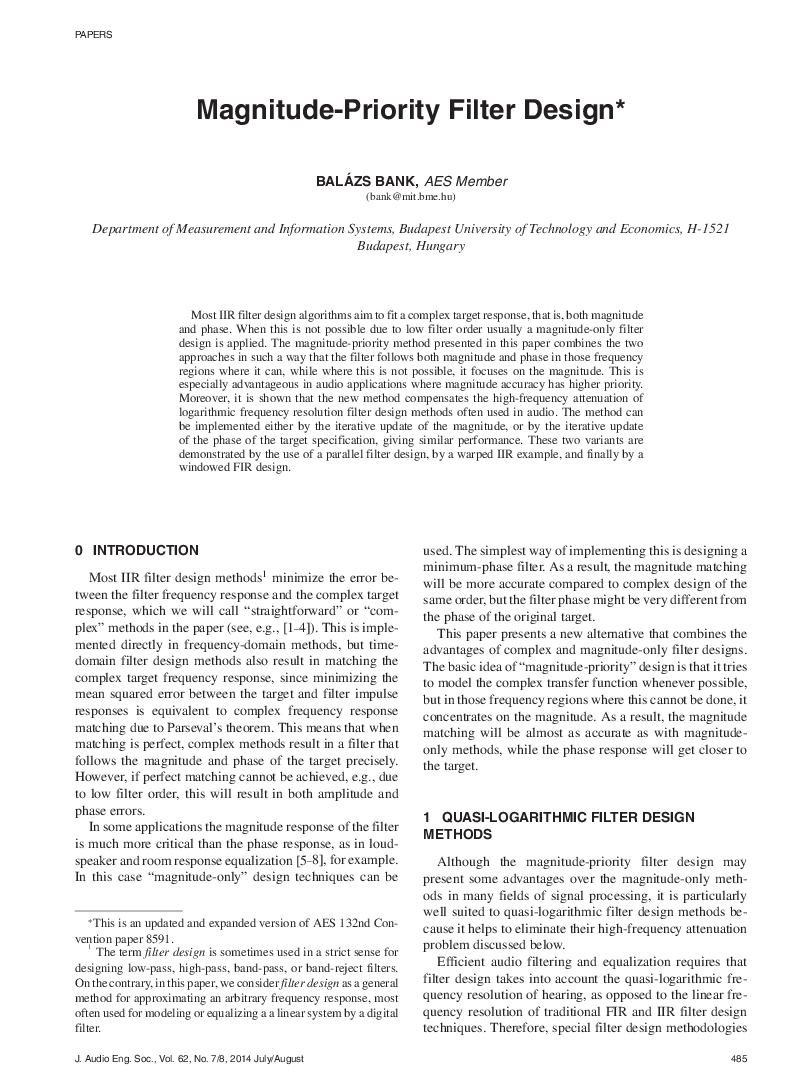Home / Publications / E-library page
You are currently logged in as an
Institutional Subscriber.
If you would like to logout,
please click on the button below.
Home / Publications / E-library page
Only AES members and Institutional Journal Subscribers can download
There are two common approaches to the design of IIR filters: (a) match the complex frequency response (magnitude-phase) or, equivalently, the impulse response, or (b) minimize only the magnitude error while ignoring the phase response. This research describes a third approach, called magnitude-priority filter design, which merges the two methods. If possible the algorithm matches the complex response, and when not possible it transitions to magnitude only criteria. This is especially useful with quasi-logarithmic frequency-resolution filters because the frequency-dependent windowing of the impulse response requires the high-frequency attenuation to be corrected. Since the magnitude-priority method does not make any assumption about the core design algorithm, this method can be combined with any technique that attempts to match the complex transfer function or impulse response.
Author (s): Bank, Balázs
Affiliation:
Department of Measurement and Information Systems, Budapest University of Technology and Economics, Budapest, Hungary
(See document for exact affiliation information.)
Publication Date:
2014-07-06
Import into BibTeX
Permalink: https://aes2.org/publications/elibrary-page/?id=17340
(561KB)
Click to purchase paper as a non-member or login as an AES member. If your company or school subscribes to the E-Library then switch to the institutional version. If you are not an AES member Join the AES. If you need to check your member status, login to the Member Portal.

Bank, Balázs; 2014; Magnitude-Priority Filter Design [PDF]; Department of Measurement and Information Systems, Budapest University of Technology and Economics, Budapest, Hungary; Paper ; Available from: https://aes2.org/publications/elibrary-page/?id=17340
Bank, Balázs; Magnitude-Priority Filter Design [PDF]; Department of Measurement and Information Systems, Budapest University of Technology and Economics, Budapest, Hungary; Paper ; 2014 Available: https://aes2.org/publications/elibrary-page/?id=17340